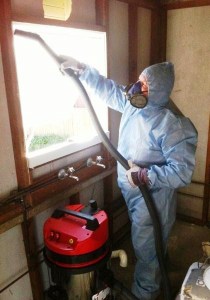In the past, people had different beliefs and protocols for their daily business. These ideas were always well intentioned, and sometimes even heralded as a sign of the great progress of humanity and the great progress to come. Bloodletting, sometimes through leeches, other times by cutting, was practiced for over 200 years by the Mesopotamians, the Egyptians, the Greeks, the Aztecs, the English, and the Mayans. Today, of course, we understand that this is at best useless and at worst actively harmful to the patient. We learned, adapted, and moved on. There have been countless other acts and measures that were meant to make life easier for humanity but were later proven to have some drawback that wiped out the good. We can look at building materials for very obvious examples of this trend. Lead was a material often used in paints. This soft, malleable metal is still used today in construction and batteries, but in the 1950’s, 60’s and ’70s it was a popular component of paints. The lead would give paint a bright sheen and a smooth texture – and slowly poison people who made contact with it. Lead damages the nervous system, the brain, and the blood. Children with painted lead toys and adults with lead painted homes came down with dangerous and deadly disorders. Society learned and moved on, but the damage was done. There are other materials that are not so easy to clean up. Asbestos is one of these materials. If you have to renovate or destroy an old building that has the spectre of asbestos lurking within, then you need special equipment. A HEPA vacuum for asbestos is absolutely necessary. Read on for a full explanation of asbestos, the danger it causes, and why HEPA vacuums are the best solution.
Why is Asbestos Such an Issue?
Asbestos was popular in the ’50s, ’60’s and ’70’s, just like lead. It was hailed as a wonder material, due to its versatility, low expense, its durability against all elements, its flexibility, and overall effectiveness. This fibrous material was used as a fire retardant, a sound insulator, an electrical insulator, and more. It is made up of small crystals that splinter and break upon being disturbed, and from there, they make their way into the air. When they’re inhaled, the crystals make their way into the victim’s lungs, and cause serious damage over time. The effects can be a chronic cough or difficulty breathing, or they can be cancerous tumors and even death. Those are just a small sample of the side effects; in reality, there are dozens of permutations of asbestos build up once the victim has inhaled it. Asbestos was discovered to be toxic only after they examined miners, shippers, and other people who interacted with the material regularly. These workers had alarming rates of lung issues and early deaths. From there, public concern and alarm snowballed. In the ’70s, asbestos was phased out as a building material, and in 2003 it was outright banned. Materials to help society cope with the aftermath such as a HEPA vacuum for asbestos or ventilators for victims were invented and put into motion soon after.
Is Asbestos Still a Problem Today?
You may look at the above paragraph and breathe a sigh of relief that this toxic material is no longer in our buildings today. However, don’t get too excited – asbestos is still a real and present danger in today’s society. Asbestos was used in the construction of hundreds of thousands of buildings. It would be wildly impractical if not outright impossible to tear down every building that was constructed with asbestos. These buildings now lurk amongst newer constructions, harbouring toxic material, and there is no solution except care, time, and a HEPA vacuum for asbestos. Until every building has been demolished and rebuilt, the threat of asbestos is still present.
Why are HEPA Vacuums the Best Solution for Asbestos?
A vacuum seems like it might pale in comparison to the threat of asbestos, but put the picture of the vacuum you use for your daily tasks out of your mind. Instead of being modest and sized so that any family member can take care of the front rug, a HEPA vacuum for asbestos is designed from the ground up to take care of this toxic particle and keep workers safe. It’s a good size larger, ranging from the size of a barrel to even a golf cart, and has multiple safety precautions. First of all, it’s incredibly durable – you won’t empty it out unless you absolutely mean to, even in the high traffic, bump and bang prone environment of a construction site. Secondly, the contents are held in a protective bag that can be transported to a waste dump site safely. The real star of the show, however, is the multiple filters. A vacuum with a job this important doesn’t leave matters to just one filter; instead, there are pre-filters that make sure that the machine doesn’t get overwhelmed. Then, any hazardous materials must content with the government inspected Class C HEPA filter. Asbestos doesn’t stand a chance!
Dealing with old buildings always has a chance of danger. The threat of asbestos has not disappeared completely despite public awareness and legislation. We can’t just leave asbestos alone and hope it goes away – when you’re working with an old building, you have to take the threat head on! Make sure you have the right equipment, such as a hazmat suit and a HEPA vacuum for asbestos. You’ll keep yourself safe from injury or contamination while on the job. Old buildings can be reconstructed with safe materials and a new purpose, but the dirty work has to be done first. With the right equipment, patience, and practice, this doesn’t have to lead to any more deaths or diseases. Instead, we can enjoy a new building without any danger or worry.
